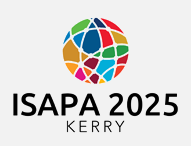Start Date
18-6-2025 9:00 AM
End Date
18-6-2025 10:30 AM
Abstract
Introduction
Physical activity (PA) is protective for health, particularly for adolescents with disabilities. Less evidence is available on digital gaming activity (GA) on health, although a popular activity among adolescents. The aim of the study was to compare levels of PA and GA among Finnish adolescents, disaggregated by disabilities.
Methods
The Finnish school-age PA study is a nationally representative study of 11y-, 13y-, 15y-, and 16y-20y old adolescents. The self-report version of the UNICEF/Washington group questions on disabilities were used. Differences between with and without disabilities were analysed by Chi-square tests of independence after stratification by age and gender.
Results
Almost a quarter of respondents (23%) had disabilities. Males with disabilities reported statistically significantly less daily PA (25%) than the ones without disabilities (33%). The corresponding percentages in females were 16 % and 22%. Low PA (0-2 days/week) were higher among the individuals with disabilities compared to those without (males 20 % vs, 11%, females 20% vs. 9%, p<.001).
Differences in daily GA amongst males with (38%) and without (33%) disabilities were not statistically significant. Daily GA among females with disabilities (15%) were significantly (p <.001) higher than without disabilities (8%).
Discussion
More must be done to promote PA among adolescents with disabilities. Female adolescents with disabilities, especially those with social-behavioural difficulties, had the lowest levels of PA, yet had higher than expected rates of daily GA. The underlying reasons for these patterns warrant further investigation, with potential targeted interventions that combine both PA and GA.
Recommended Citation
Ng, Kwok, "Physical activity and gaming activity among adolescents with disabilities" (2025). International Symposium of Adapted Physical Activity and International Symposium on Physical Activity and Visual Impairment and Deafblindness. 13.
https://sword.mtu.ie/isapa/2025/day3/13
Physical activity and gaming activity among adolescents with disabilities
Introduction
Physical activity (PA) is protective for health, particularly for adolescents with disabilities. Less evidence is available on digital gaming activity (GA) on health, although a popular activity among adolescents. The aim of the study was to compare levels of PA and GA among Finnish adolescents, disaggregated by disabilities.
Methods
The Finnish school-age PA study is a nationally representative study of 11y-, 13y-, 15y-, and 16y-20y old adolescents. The self-report version of the UNICEF/Washington group questions on disabilities were used. Differences between with and without disabilities were analysed by Chi-square tests of independence after stratification by age and gender.
Results
Almost a quarter of respondents (23%) had disabilities. Males with disabilities reported statistically significantly less daily PA (25%) than the ones without disabilities (33%). The corresponding percentages in females were 16 % and 22%. Low PA (0-2 days/week) were higher among the individuals with disabilities compared to those without (males 20 % vs, 11%, females 20% vs. 9%, p<.001).
Differences in daily GA amongst males with (38%) and without (33%) disabilities were not statistically significant. Daily GA among females with disabilities (15%) were significantly (p <.001) higher than without disabilities (8%).
Discussion
More must be done to promote PA among adolescents with disabilities. Female adolescents with disabilities, especially those with social-behavioural difficulties, had the lowest levels of PA, yet had higher than expected rates of daily GA. The underlying reasons for these patterns warrant further investigation, with potential targeted interventions that combine both PA and GA.

